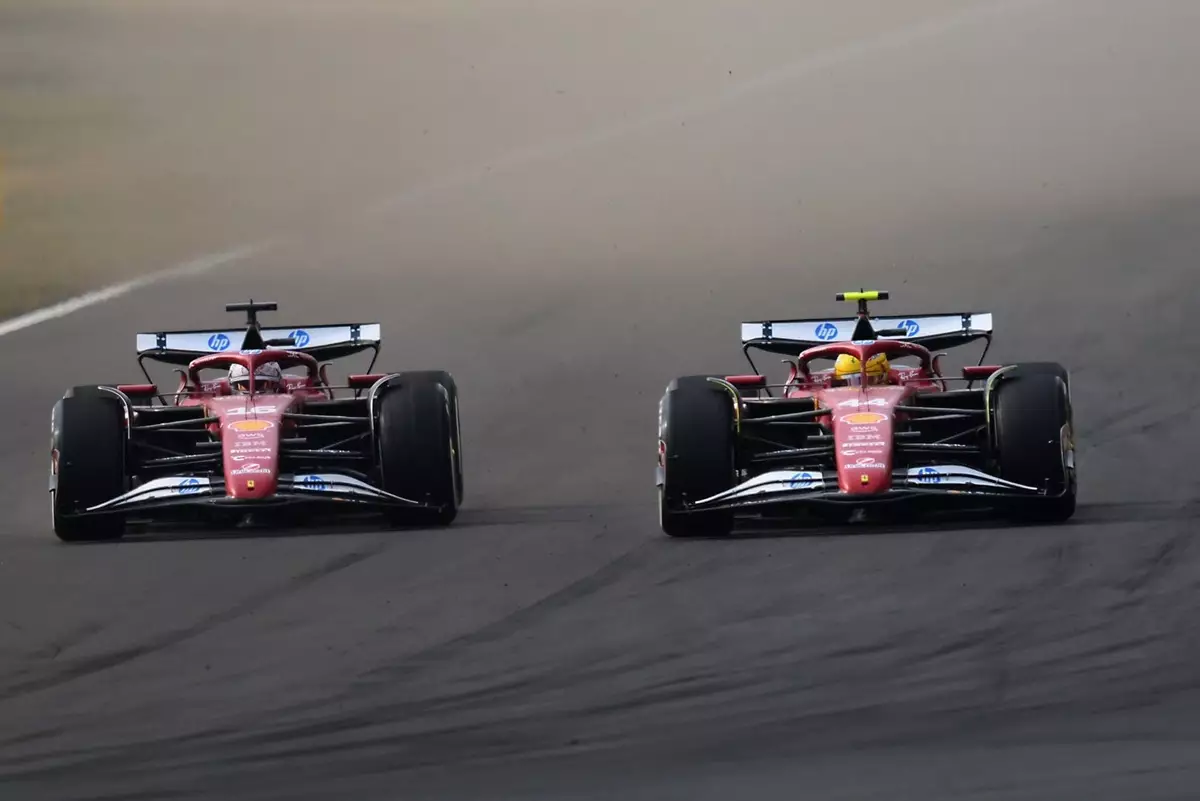The recent Chinese Grand Prix served as a sharp reminder of how quickly fortunes can shift in Formula 1. Ferrari’s team, typically a symbol of precision and excellence, found themselves at the center of a storm following the race. As Charles Leclerc and Lewis Hamilton crossed the finish line in fifth and sixth, respectively, their sense of achievement was abruptly shattered. The team’s failure to adhere to technical regulations led to a shocking double disqualification, resulting in the loss of a staggering 18 constructors’ points. What was anticipated as a strong performance instead turned into a lesson in humility.
Ferrari officials attributed Leclerc’s underweight car to unexpected tire wear resulting from a one-stop strategy—essentially a gamble that backfired. Initially expected to employ a two-stop strategy, the team miscalculated the implications of the race shifting to an alternative tire plan. This oversight not only caused Leclerc’s car to drop below the required weight limit but also raised questions about the team’s long-term strategy decisions. The issues faced in China highlight a potential vulnerability that the famed Scuderia cannot afford in their pursuit of championship titles.
The Weighty Consequences
While Ferrari was quick to point fingers at the tire management as the main culprit for Leclerc’s disqualification, the acknowledgment of Hamilton’s skid wear served as a glaring reminder of risk management errors. The rearward skid wear was not merely a technicality; it was an indicator of larger calculation failures. Ferrari’s admission of misjudgment during qualifying hints at a deeper issue: the need for a more robust analysis of tire performance under race conditions. The FIA’s regulations are unyielding, and the ramifications for missteps can be catastrophic, as the Scuderia learned firsthand.
Rather than simply lamenting lost opportunities, this debacle should serve as a catalyst for Ferrari to re-evaluate their operational strategies and decision-making processes. The team’s commitment to learn from these mistakes can only help in fortifying their foundations for future races. As they grapple with the fallout, fans and analysts alike will be watching closely for signs of growth or further missteps.
The Ripple Effect in the Championship Standings
Ferrari’s misfortune rippled through the standings and offered unexpected opportunities for other teams. Alpine’s Pierre Gasly found himself disqualified for the same weight limit violation that marred Ferrari’s day, drawing attention to how quickly dominant performances can crumble under scrutiny. Meanwhile, Aston Martin’s Lance Stroll and Williams’ Carlos Sainz inexplicably climbed into points-scoring positions, further emphasizing the unpredictable nature of the sport. The Haas team benefitted significantly, underlining how surprises and setbacks can radically alter the competitive landscape in Formula 1.
This dramatic turn of events during the Chinese Grand Prix made it clear that while technical prowess is essential in Formula 1, adaptive strategies are paramount. Teams must be nimble enough to pivot quickly in changing race dynamics, and Ferrari will undoubtedly be reflecting on these lessons moving forward. With the fans’ undeterred support lingering in the background, the upcoming races will be critical to see how Ferrari rebounds from this blunder and re-establishes their place in the fierce competitive arena.


Leave a Reply